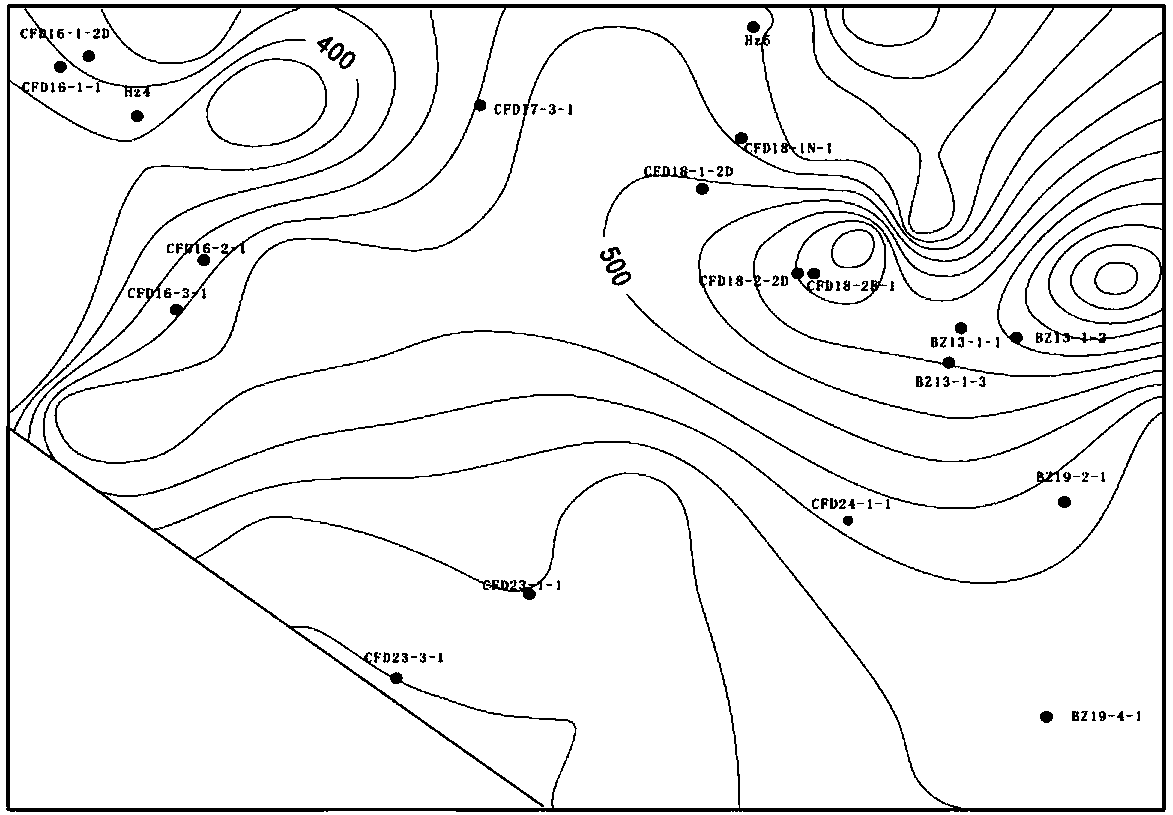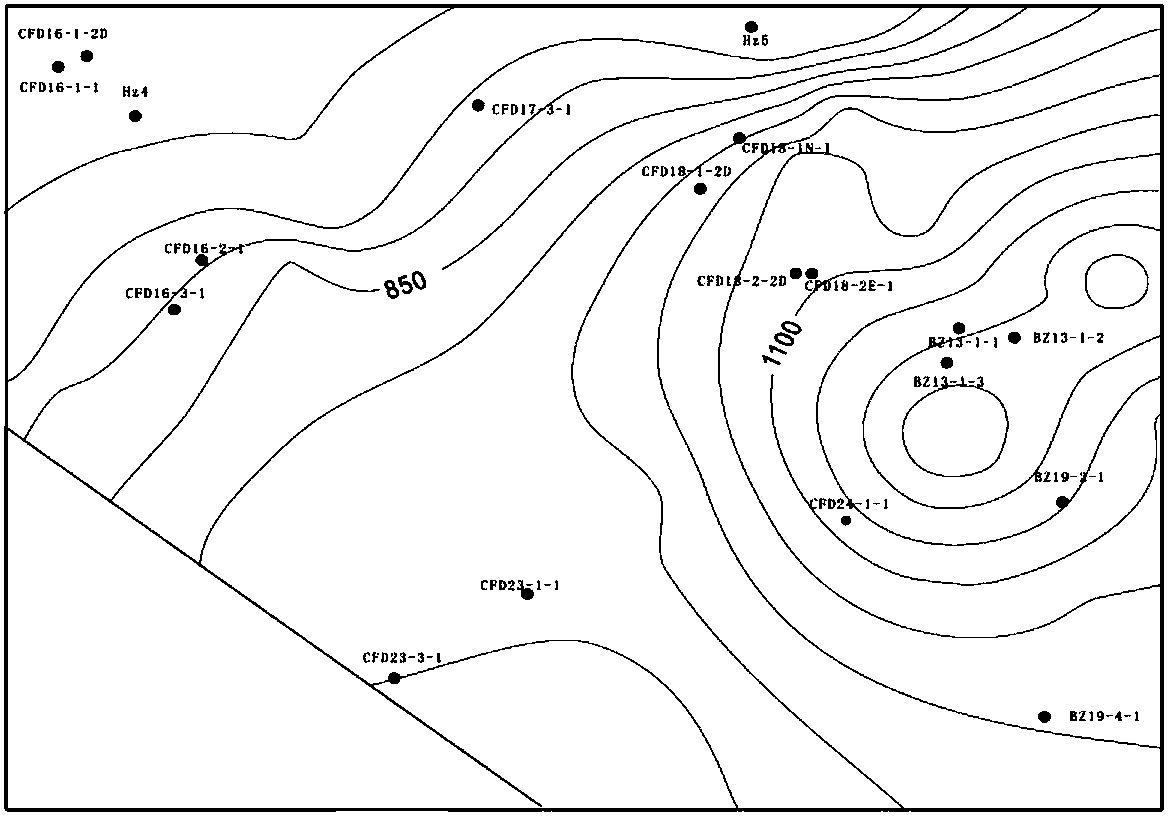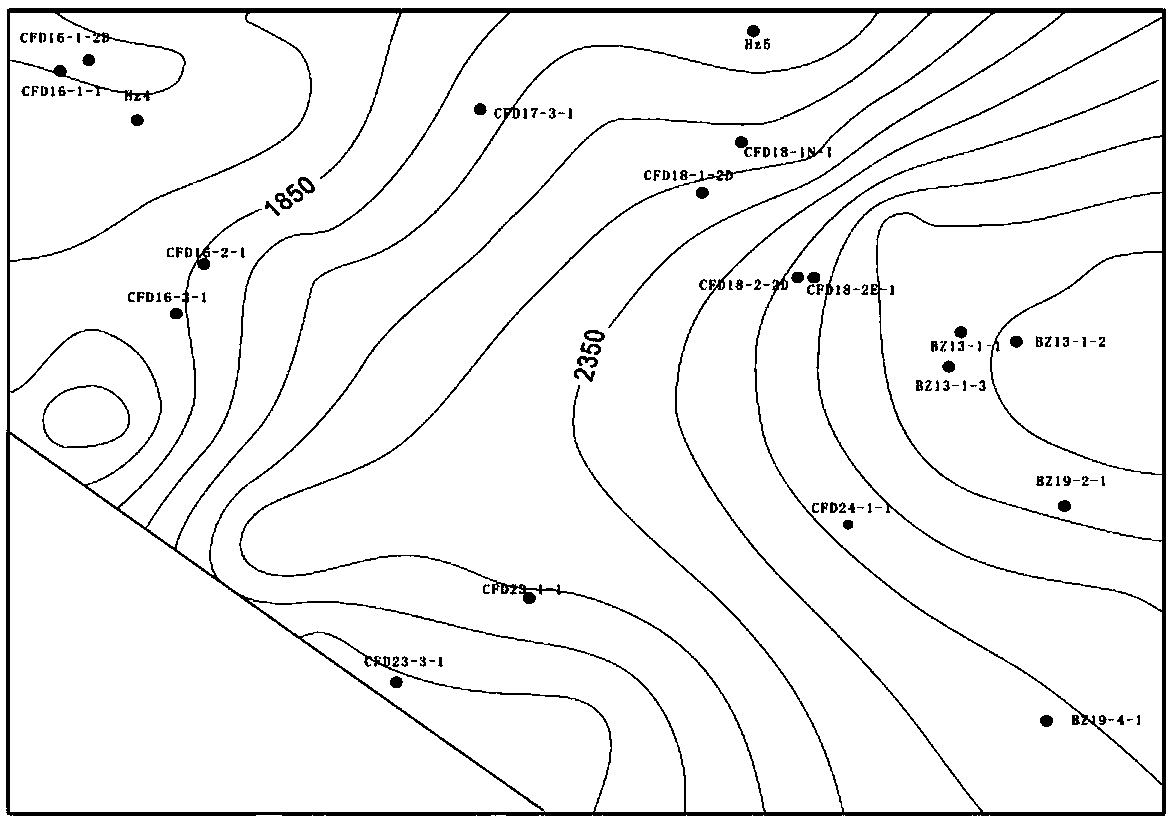Clastic rock reservoir porosity prediction method based on diagenetic process
A prediction method and clastic rock technology, applied in the field of oil and gas exploration and development, can solve the problems of unable to reproduce the complex process of reservoir evolution, unable to meet the needs of scientific research in fine description of oil and gas reservoirs, and failing to comprehensively consider cementation strength.
- Summary
- Abstract
- Description
- Claims
- Application Information
AI Technical Summary
Problems solved by technology
Method used
Image
Examples
Embodiment 1
[0185] A method for predicting the porosity of clastic rock reservoirs based on the diagenetic process includes the following steps:
[0186] 1) Collect geological data of the study area, which includes:
[0187] ①Compact table, cementation table and dissolution table of the second member of Dongying Formation in the study area;
[0188] ②Structural contour map of the Plain Formation in the study area;
[0189] ③Structural contour map of Minghuazhen Formation in the study area;
[0190] ④Contour map of Guantao Formation in the study area;
[0191] ⑤Structural contour map of the second member of the Dongying Formation in the study area;
[0192] ⑥ Sedimentary facies map of the second member of the Dongying Formation in the study area;
[0193] ⑦ Lithological distribution map of the second member of Dongying Formation in the study area;
[0194] ⑧Fluid distribution map of the second member of the Dongying Formation during the deposition of the Guantao Formation in the study...
Embodiment 2
[0329] The porosity prediction method of clastic rock reservoirs based on diagenetic process predicts the reservoirs of the second member of the Dongying Formation in the Bozhong sag. The specific steps are as follows:
[0330] 1) Collect geological data of the study area
[0331] The geological data of the second member of the Dongying Formation in the Bozhong sag were collected, and various types of data were classified according to the original data database. The collected geological data includes the following contents: the dissolution table of the second member of the Dongying Formation in the study area (Table 1, Table 2, Table 3), and the structural contour map of the Pingyuan Formation in the study area (Table 1, Table 2, Table 3). figure 1 ), structural contour map of Minghuazhen Formation in the study area ( figure 2 ), the structural contour map of the Guantao Formation in the study area ( image 3 ), the structural contour map of the second member of the Dongyin...
PUM
 Login to View More
Login to View More Abstract
Description
Claims
Application Information
 Login to View More
Login to View More - R&D
- Intellectual Property
- Life Sciences
- Materials
- Tech Scout
- Unparalleled Data Quality
- Higher Quality Content
- 60% Fewer Hallucinations
Browse by: Latest US Patents, China's latest patents, Technical Efficacy Thesaurus, Application Domain, Technology Topic, Popular Technical Reports.
© 2025 PatSnap. All rights reserved.Legal|Privacy policy|Modern Slavery Act Transparency Statement|Sitemap|About US| Contact US: help@patsnap.com



